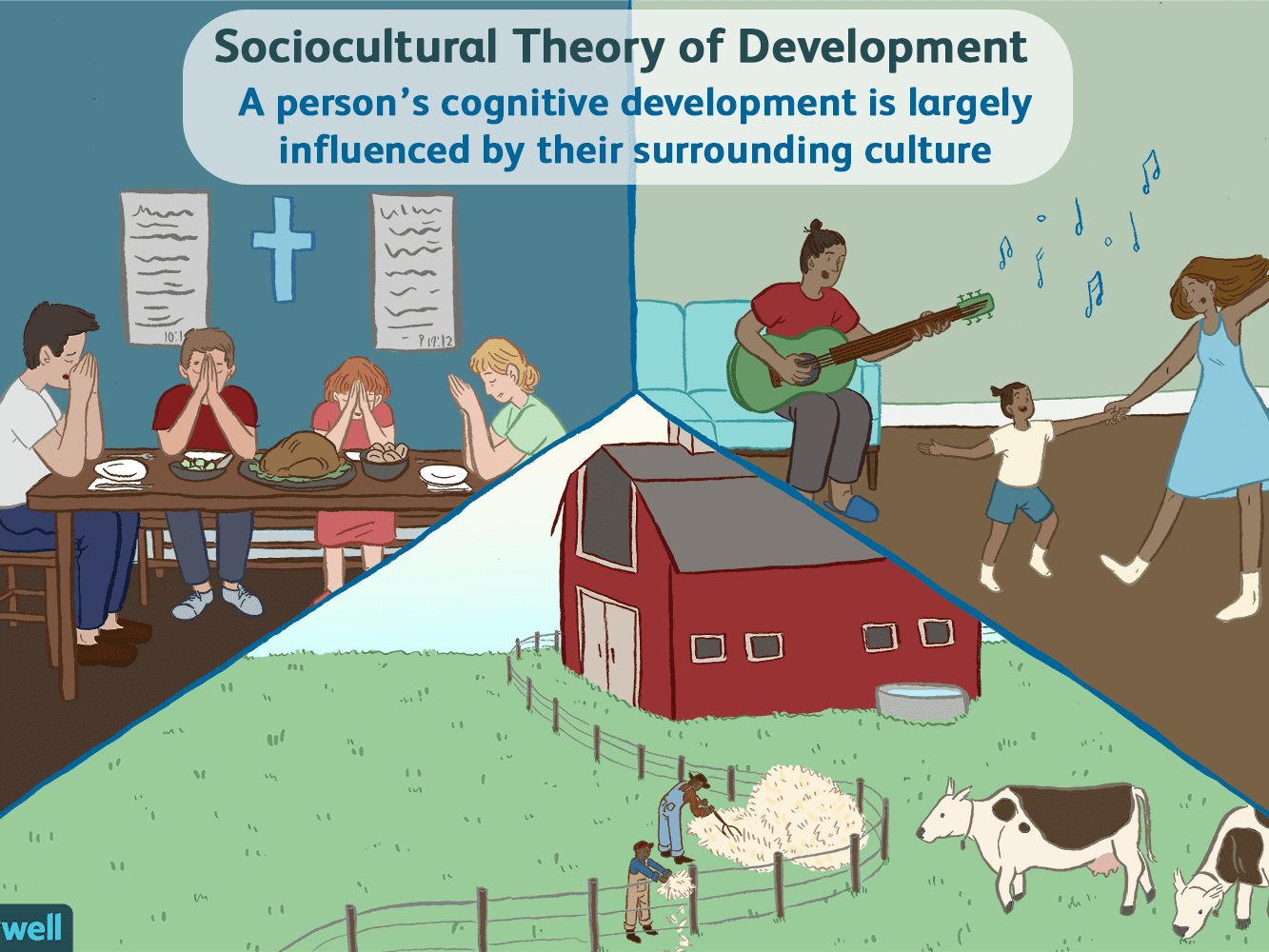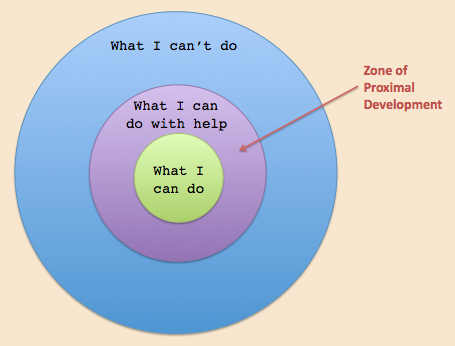- Get link
- X
- Other Apps
- Get link
- X
- Other Apps
Lev Vygotsky lived between 1896 and 1934. He was born in Russia in the same year as Piaget but died at a very tender age of 38. Vygotsky has been known to be a prolific writer who wrote 10 books in a period of 10 years, thus 1924 to 1934. His contribution on cognitive developmental was largely unknown to the West until it was published in 1962.
Vygotsky
lived during the Russian Revolution. He began to work in psychology shortly
after the Russian revolution, where Marxism replaced the rule of the czar. The
new philosophy of the Marxist emphasised socialism and collectivism. Sharing
and co-operation was encouraged, and the success of any individual was seen as
reflecting the success of the culture. It is this political environment in
which Vygotsky lived that influenced his sociocultural approach to cognitive
Development.
-
Firstly,
he assumed that Cognitive skills have their origin in social relations and are
embedded in a sociocultural backdrop. This assumption is very key to Vygotsky’s
sociocultural approach to cognitive development.
-
Secondly
he argued that the child’s cognitive skills can be understood only when they
are developmentally analysed and interpreted and
-
lastly"
that Cognitive skills are mediated by words, language, and forms of discourse
which serve as psychological tools for facilitating and transforming mental
activity.
In
his theory of cognitive development, Vygotsky postulated four major themes and
each one will be discussed at length.
SOCIAL INTERACTION
Social Interaction is one major theme of Vygotsky’s theoretical framework, He argued that social interaction plays a fundamental role in the development of cognition. Development in Vygotsky’s theory applies mainly to mental development, such as thought, language and reasoning process. These abilities were understood to develop through social interactions with others (especially parents) and therefore represented the shared knowledge of the culture.
Higher mental processes, such as directing
your own attention, and thinking through problems, first are constructed during
shared activities between the child and another person. Then the processes are
internalised by the child and become part of that child’s cognitive
development. A situation below illustrates how this happens.
A
six-year-old has lost a toy and asks her father for help. The father asks her
where she last saw the toy; the child says “I can’t remember.” He asks a series
of questions-did you have it in your room? Outside? Next door? To each question
the child answers, “no”. When he says “in the car?” she says “I think so” and
goes to retrieve the toy.
Who
do you think remembered? The answer is really neither the father nor the
daughter but the two together. The remembering and problem solving were
co-constructed between people in the interaction. But the child (and the
father) may have internalised strategies to use next time something is lost. At
some point the child will be able to function independently to solve this kind
of problem
Vygotsky
pointed out that tools provided by the culture support thinking and that higher
mental processes for instance, reasoning, problem solving are mediated by
psychological tools such as language, signs and symbols. Cultural tools are of two
kinds: Real tools such as cell
phones, computers, Internet and Symbolic
tools which may include numbers, maps, signs, codes and sign language.
Development proceeds through the internalisation of social interactions, with
the fundamental social interaction being interaction through language.” (Fox
2008)
Vygotsky
(1978:57) states: "Every function in the child's cultural development appears
twice: first, on the social level, and later, on the individual level; first,
between people (interpsychological) and then inside the child (intrapsychological).
This applies equally to voluntary attention, to logical memory, and to the
formation of concepts. All the higher functions originate as actual
relationships between individuals."
MORE KNOWLEDGEABLE OTHER
The More Knowledgeable Other (MKO) is somewhat self-explanatory; it refers to someone who has a better understanding or a higher ability level than the learner, with respect to a particular task, process, or concept. This is one other major theme in Vygotsky’s explanation of the sociocultural theory.
Although the implication is that the MKO is a teacher or an older adult, this is not necessarily the case. Many times, a child's peers or an adult's children may be the individuals with more knowledge or experience. For example, children and not their parents are more likely to know more about the newest teen-age music groups, how to win at the most recent PlayStation game, or how to correctly perform the newest dance craze.
Furthermore, the More Knowledgeable Other may not be a person at all. Lately, some companies as a way to support employees in their learning process, are now using electronic performance support systems. Electronic tutors have also been used in educational settings to facilitate and guide students through the learning process. The key to MKOs is that they must have (or be programmed with) more knowledge about the topic being learned than the learner does.
Since much of what a child learns comes from the culture around her and much of the child’s problem-solving is mediated through an adult’s help, it is wrong to focus on a child in isolation. Such focus does not reveal the processes by which children acquire new skills. Interactions with the surrounding culture and social agents, such as parents and more competent peers, contribute significantly to a child’s intellectual development.
THE ZONE OF PROXIMAL DEVELOPMENT
The concept of the More Knowledgeable Other is integrally related to the other important principle of Vygotsky's work, the Zone of Proximal Development (ZPD). The ZPD is the range of tasks that one cannot yet perform independently, but can accomplish with the help of a more competent individual. It simply defines skills and abilities that are in the process of developing. Closely linked to the idea of zone of proximal development is the concept of Scaffolding, a structure or guidance of a more experienced person. It is a technique of changing the level of support.
The
ZPD is an important concept that relates to the difference between what a child
can achieve and what a child can achieve with guidance and encouragement from a
skilled partner. For example, the child could not solve the jigsaw puzzle by
itself and would have taken a long time to do so (if at all), but was able to
solve it following interaction with the father, and has developed competence at
this skill that will be applied to future jigsaws.
Vygotsky (1978) sees the Zone of Proximal Development as the area where the most sensitive instruction or guidance should be given - allowing the child to develop skills they will then use on their own - developing higher mental functions. He views interaction with peers, as an effective way of developing skills and strategies. He suggests that teachers use cooperative learning exercises where less competent children develop with help from more skilful peers.
In the above figure, the zone of proximal development is ‘what a child can do with help’. The zone of ‘what I cannot do’ means that even if the child was taught by the most effective teacher he or she would still not get the concept. Besides, this knowledge is not even necessary. By and large sociocultural theorists have argued that the range of skill that can be developed with adult guidance or peer collaboration exceeds what can be attained alone.
LANGUAGE AND THOUGHT
Language and thought is one other major theme that Vygotsky looked at. He believed that young children use language not only for social communication but also to plan, guide and monitor their behaviour in a self-regulatory fashion-what is called inner speech or private speech. These two: language and thought initially develop independently of each other and then merge.
Since he pointed out that all mental functions have external
or social origins, children must use language to communicate with others before
they can focus inward (self-talk) on their own thoughts. After a while the
self-talk becomes second nature to children and they can act without
verbalizing. When this occurs children have internalized their egocentric
speech in the form of inner speech, which becomes their thoughts.
APPLICATION OF LEV VYGOTSKY’S THEORY TO TEACHING AND LEARNING IN ZAMBIA
The
following are some of the ways in which Vygotsky’s theory can be applied and is
applied in teaching and learning.
1.
The Curriculum is
designed to emphasize interaction between learners and learning tasks, children
learn much through interaction
2.
Assessment methods
should take into account the zone of proximal development. What children can do
on their own is their level of actual development
and what they can do with help is their level of potential development. Assessment methods must target both the level of
actual development and the level of potential development.
3.
Scaffolding is
used when students need help
4.
Use of more
skilled peers as teachers which Vygotsky called the More Knowledgeable Other.
Criticisms
1.
Vygotsky’s theory
does not provide the richness that Piaget’s approach offers
2.
He did not provide
the kinds of specific tools for research that Piaget’s many tests and
experiments have given us.
3.
Vygotsky’s
approach offers only a general outline of cognitive development; in its
emphasis on the social and cultural aspects of learning and cognition, however,
it challenges future researchers to explore the role of context in greater
depth.
Conclusion
In this
discourse, we have laboured to discuss the cognitive development theory as
advanced by Piaget and Vygotsky. Piaget is the proponent who emphasised a
sequence of four stages of cognitive development. Vygotsky on the other side
emphasised social interactions as key to cognitive development which led to his
development of sociocultural theory. Though each theory has its weaknesses,
they both are key to the Zambian teaching and learning strategies.
COMPARISON OF VYGOTSKY’S AND PIAGET’S THEORIES
1. Vygotsky Strongly emphasised on sociocultural context
while Piaget there was little emphasis
2.
Vygotsky was a
Social constructivist while Piaget was a cognitive constructivist
3.
No general stages
of development were proposed by Vygotsky while Piaget strongly emphasized the
stages.
4.
The key processes
for Vygotsky were zone of proximal development, language, dialogue and tools of
culture while Piaget emphasized on the schema, assimilation, accommodation, operations,
conservation, Classification, hypothetical deductive reasoning to mention but a
few.
5.
For Vygotsky
Language plays a powerful role in shaping thought. For Piaget language plays a
minimal role in shaping thought. Cognition primarily directs language
6.
Education plays a
central role, helping children learn the tools of the culture in Vygotsky’s
sociocultural theory. In Piaget’s cognitive development education merely
refines the child’s cognitive that already have emerged.


Comments
Post a Comment